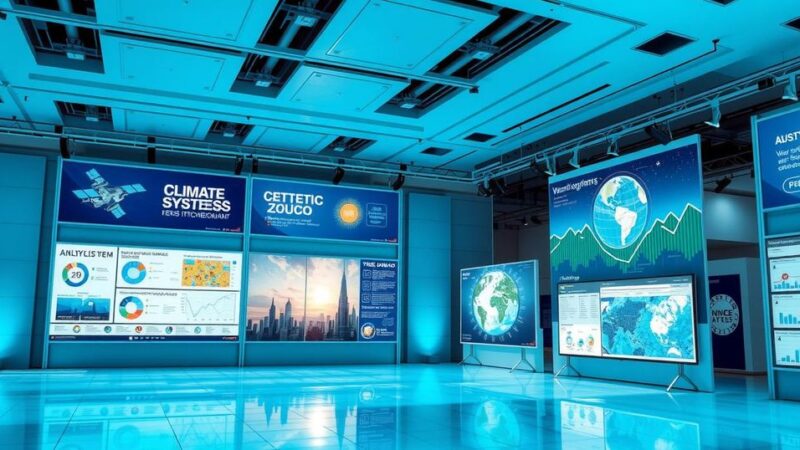A two-year international study identifies atmospheric rivers as significant contributors to record temperatures and rapid glacier melting in Antarctica. The study highlights their dual impact on climate change, acknowledging both negative and positive effects, and advocates for enhanced predictive models.
A comprehensive two-year study conducted by scientists, including those from Istanbul Technical University, has emphasized the critical role of atmospheric rivers in influencing extreme temperature records and the accelerated melting of glaciers in Antarctica. The research, featured in Nature Reviews Earth & Environment, delineates how atmospheric rivers are responsible for heat waves in coastal Antarctica, provoking pronounced glacier melting, which contributes to rising sea levels and heavy snowfall inland.
Atmospheric rivers are defined as lengthy, narrow air currents that transport moisture from tropical regions to polar areas. Deniz Bozkurt, a lecturer and researcher, noted that while these events occur only a few times annually, they precipitate significant impacts in coastal regions, including temperature spikes and accelerated ice melt. During his Antarctic field camp experience, he observed three substantial storms attributable to these atmospheric phenomena, which were analyzed using comprehensive data.
Bozkurt articulated the potential intensification of atmospheric rivers due to climate change, stating that increased evaporation leads to higher moisture content in these currents. Consequently, he stressed that these weather events are predicted to become more frequent and potent, posing a risk of exacerbated sea level rise in the future. He underscored the necessity for research to account for both the detrimental and beneficial aspects of atmospheric rivers, particularly as they can promote glacier stability through increased snowfall at higher elevations.
Burcu Boza, a Ph.D. student at the Eurasia Institute of Earth Sciences, highlighted that atmospheric rivers are crucial for precipitation in Antarctica, despite the continent’s arid features. She explained that while these events deliver significant moisture, their unique characteristics differ from those in other regions. Understanding the intricacies of atmospheric rivers is vital for accurate projections of global sea-level changes.
Emir Toker noted the challenges in predicting atmospheric rivers, yet emphasized advancements indicating that these events can be forecasted with a lead time of three to five days. This progress is pivotal in a delicate environment such as Antarctica, where understanding such dynamics is critical for ecological conservation.
The study showcases the collaboration of diverse scientific experts, revealing the multifaceted impacts of atmospheric rivers on the Antarctic ecosystem and reinforcing the urgency for updated climate models that incorporate their comprehensive effects.
In summary, the recent extensive study underscores the significant influence of atmospheric rivers on Antarctica’s climate, highlighting their potential to trigger warming, melt glaciers, and impact sea levels. While they can have adverse effects, such as exacerbating glacier melt, they may also support snow accumulation in certain regions. The research emphasizes the need for improved predictive models recognizing both the benefits and detriments of atmospheric rivers for comprehensive climate understanding.
Original Source: www.aa.com.tr





